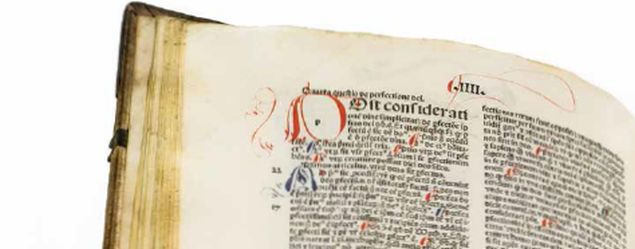
Commentaries on the Exhibit’s Works
Files
Download Commentary (204 KB)
Description
A brief commentary prepared by Robert Brecha, PhD, Professor, Physics, and Bill Marvin, MA, Lecturer, Philosophy, on the following work:
Galileo
Sidereus Nuncius (Starry Messenger)
1610; one of only two known copies of earliest issue of the first edition
Permission Statement
This item and all others in the Imprints and Impressions collection are licensed for research, educational and private use. Proper attribution must be used when downloading or reproducing this content. If you wish to use the materials for other purposes, please contact University of Dayton Libraries to obtain permission: 937-229-4221.
Contents of Streaming Media
Robert Brecha, professor of physics, discusses the role of technological innovation in Galileo Galilei’s Sidereus Nuncius, or Starry Messenger.




Comments
A most remarkable event for a scientist is to be the first to see nature in a new way. In the early seventeenth century, with the invention of the telescope, Galileo experienced just such epiphanies, perhaps the most spectacular of which came in early 1610, as he recorded the graceful dance of four spots of light about the planet Jupiter. Galileo describes this discovery and others in his Sidereus Nuncius. At the end, Galileo notes the importance of his observations of the four bodies:
“(W)e have a notable and splendid argument to remove the scruples of those who can tolerate the revolution of the planets round the Sun in the Copernican system, yet are so disturbed by the motion of one Moon about the Earth … that they consider that this theory of the constitution of the universe must be upset as impossible; for now … our sense of sight presents to us four stars circling about Jupiter, like the Moon about the Earth.”